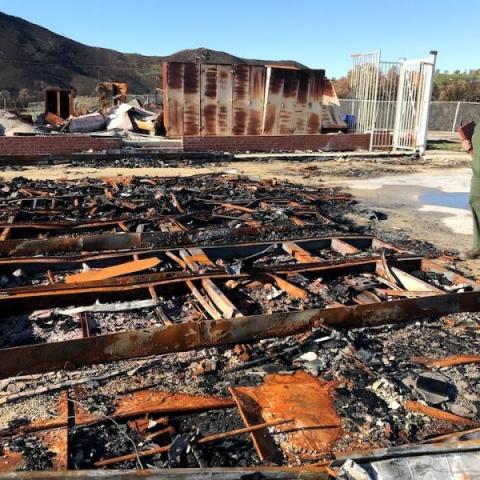
Park Service biologists had been tracking P-41 since May 2015 in hopes of learning about how mountains lions move within the landscape/NPS
Scientists are working to understand what caused the death of a mountain lion that was found Wednesday near Santa Monica Mountains National Recreation Area.
The male, about 10 years old and known as P-41, was found on the edge of the Verdugo Mountains, east of the national recreation area near the Shadow Hills neighborhood. The cause of death is unclear in part because the carcass had already deteriorated over a period of a few days before the death was reported by a local resident, the park said.
“P-41 had already overcome a number of challenges to survive in a relatively small home range with habitat fragmented by roads and development,” said Jeff Sikich, a biologist at Santa Monica Mountains. “Unfortunately, there are a number of challenges for mountain lions to survive in this area.”
Although P-41 survived for at least a few weeks after the recent La Tuna Fire, which burned more than 7,000 acres in the Verdugos, it is possible that the fire was a contributing factor in his death. The California Department of Fish and Wildlife will conduct a necropsy to better understand the cause of death.
“We are grateful to the resident who reported the dead mountain lion,” said Julianne Taylor, a CDFW South Coast Region environmental scientist. “It’s important to understand the mountain lions’ entire life history, which includes mortalities and cause of death.”
National Park Service biologists had been tracking P-41 since May 2015 and were eager to learn more about landscape connectivity and movement corridors in the region. They were particularly interested to learn whether he would remain in the Verdugos or also use the southern San Gabriel Mountains as part of his territory, which would involve crossing the 210 Freeway.
Based on GPS data collected during the two years he was tracked, he did not cross the 210 Freeway or use the San Gabriel Mountains, but he had crossed State Route 2, otherwise known as the Glendale Freeway, and used portions of the San Rafael Hills as his territory.
The GPS function on P-41’s collar failed earlier this summer, so biologists were unable to track how, if at all, the La Tuna Fire affected his movements. Local residents had obtained post-fire remote camera photos of a female mountain lion that also uses the Verdugo Mountains, but had not obtained any photos of P-41.
Since 2002, the National Park Service has been studying mountain lions in and around the Santa Monica Mountains to determine how they survive in an increasingly fragmented and urbanized environment. The California Department of Fish and Wildlife is responsible for overseeing the management and conservation of mountain lions in the state.


 Support Essential Coverage of Essential Places
Support Essential Coverage of Essential Places







Add comment